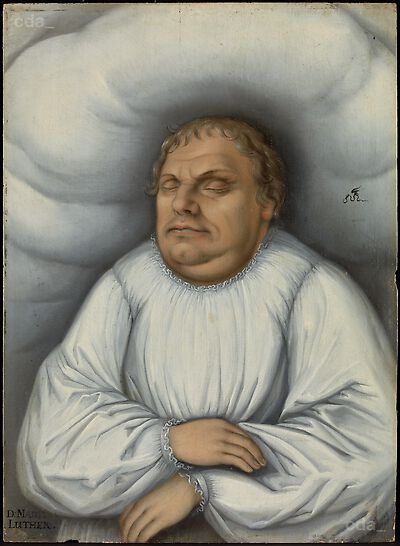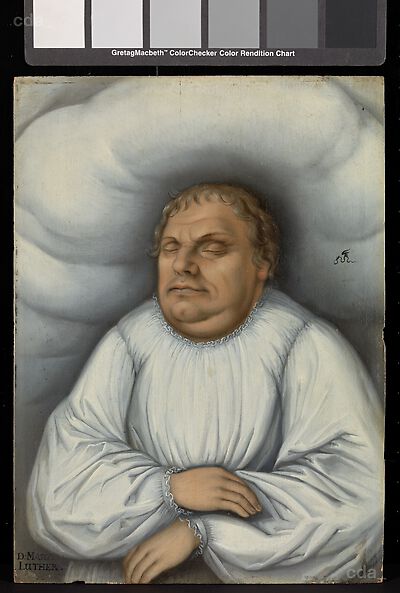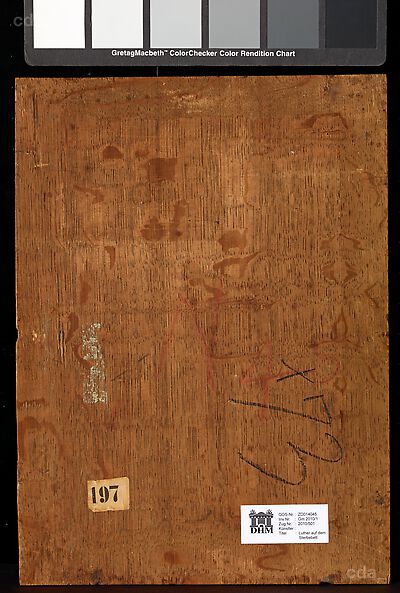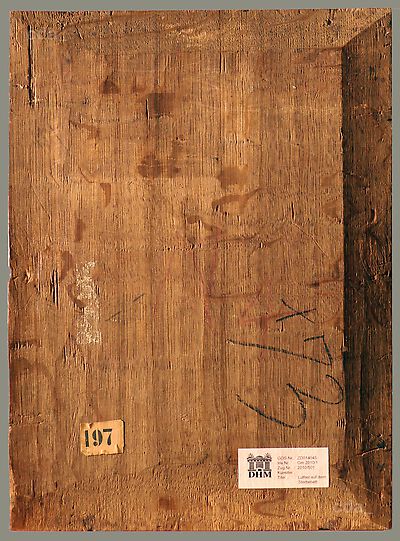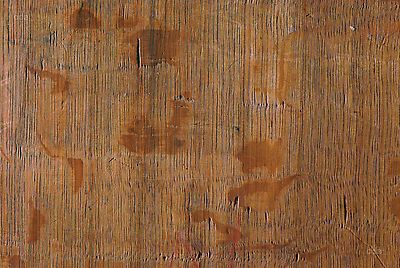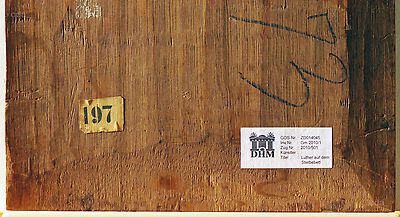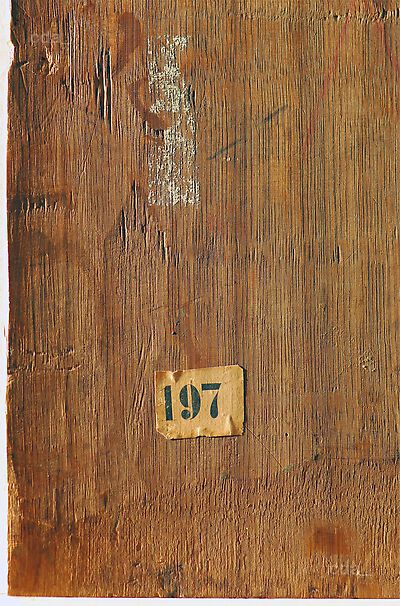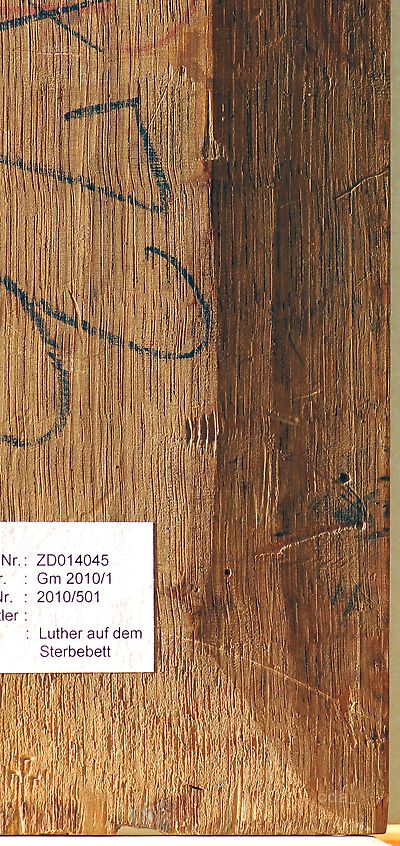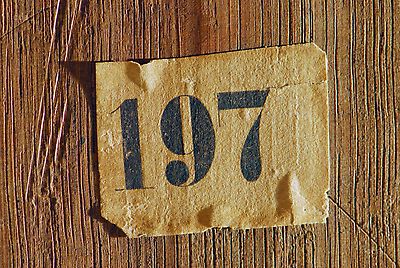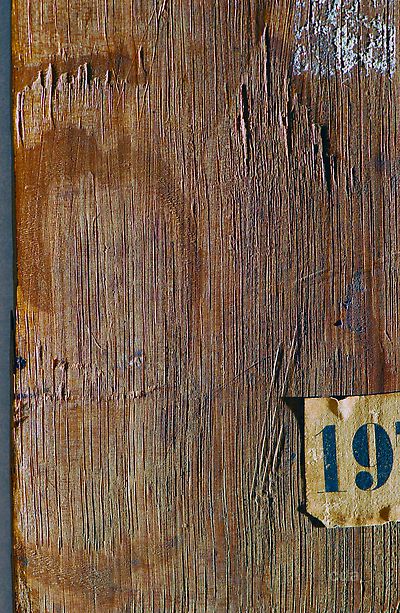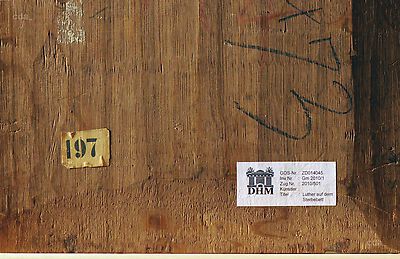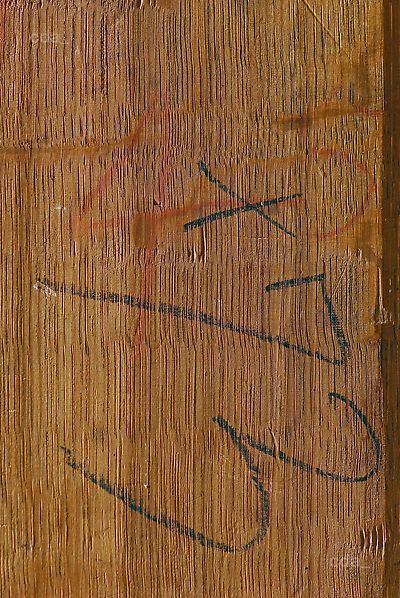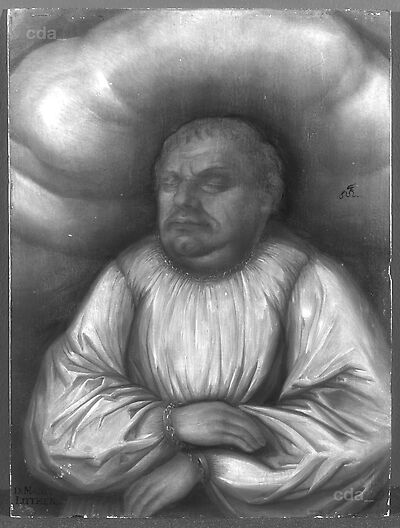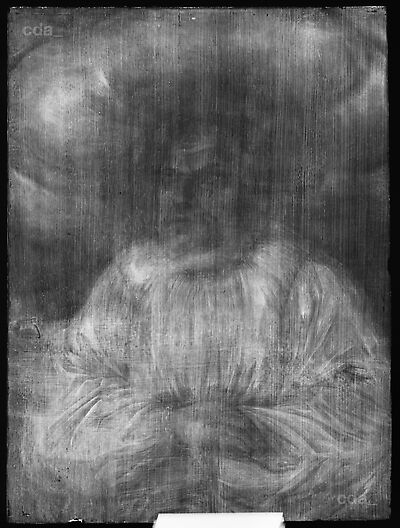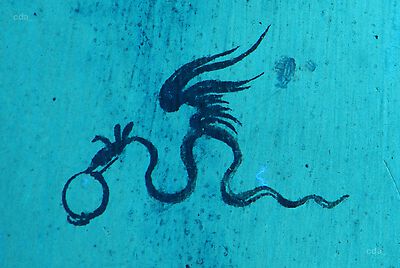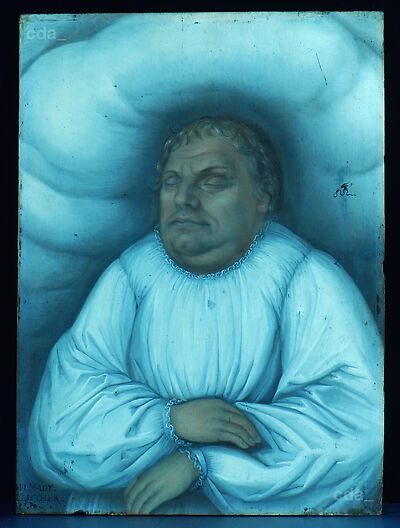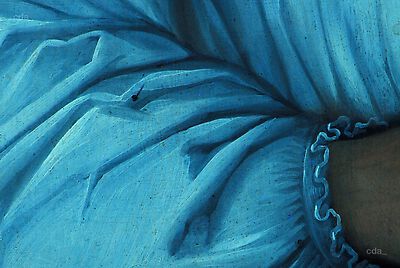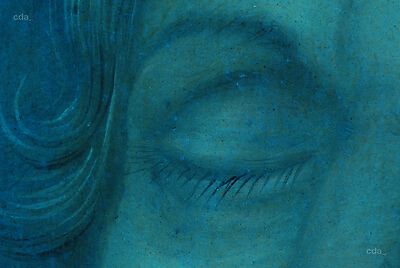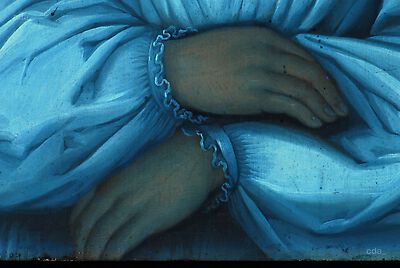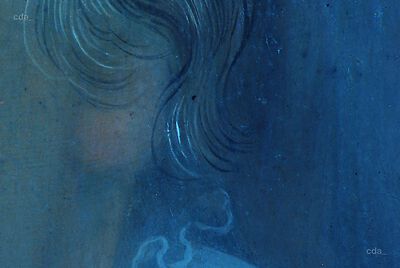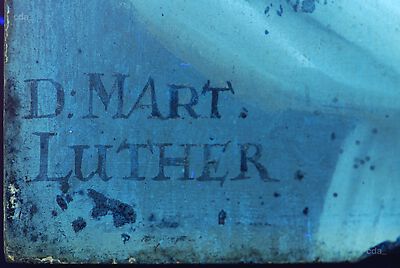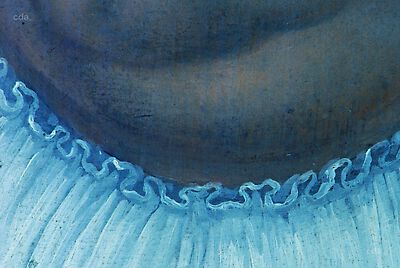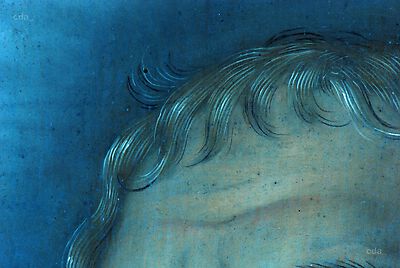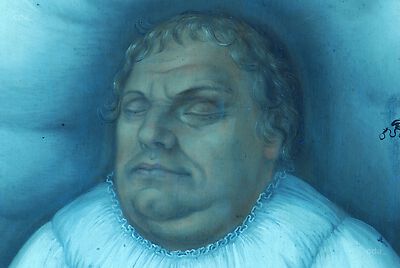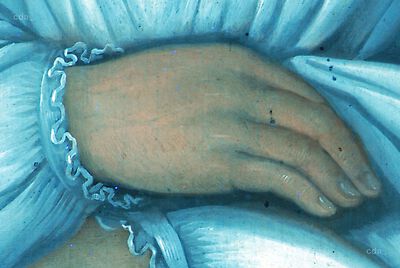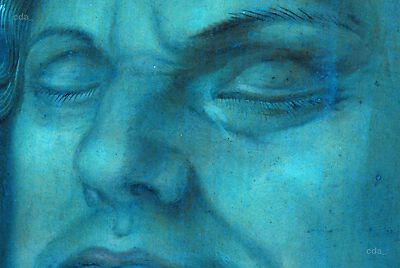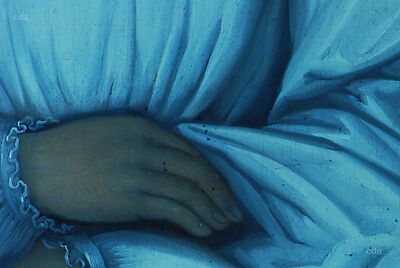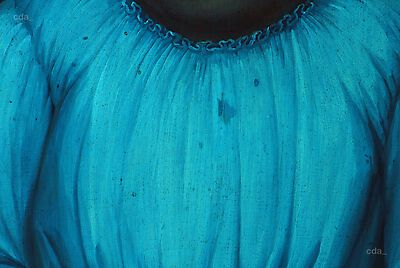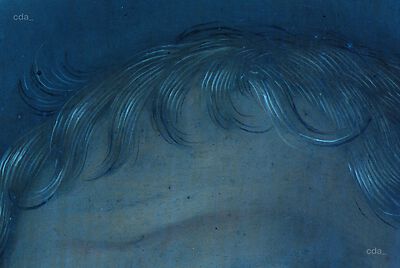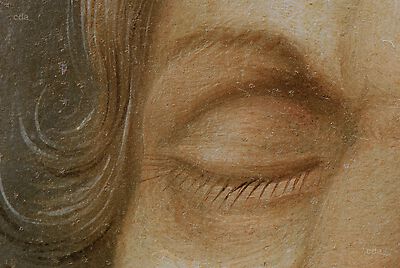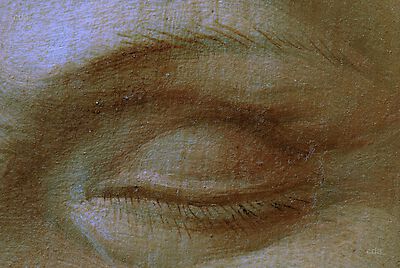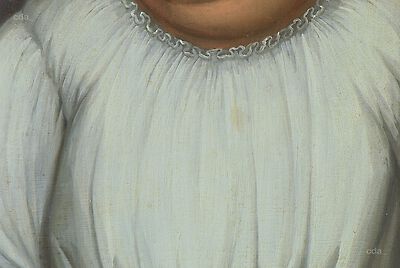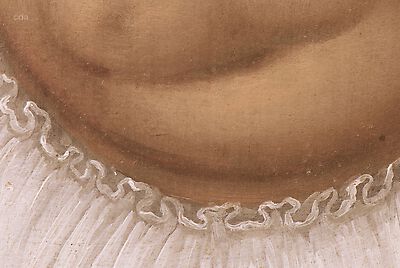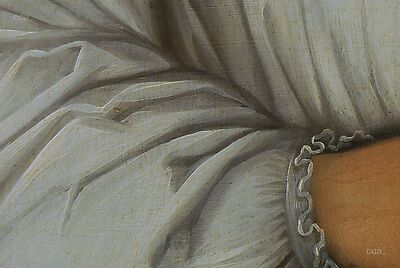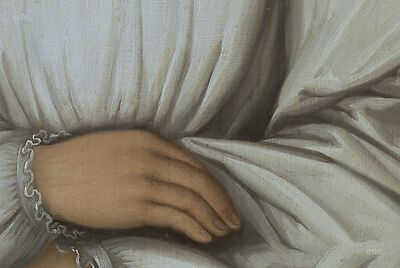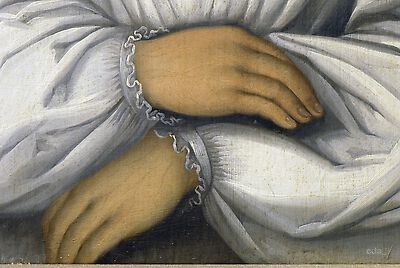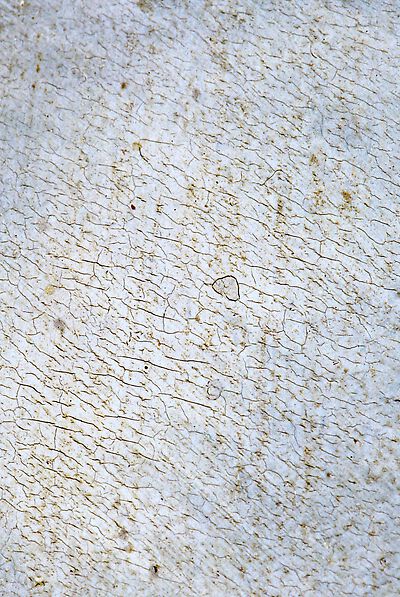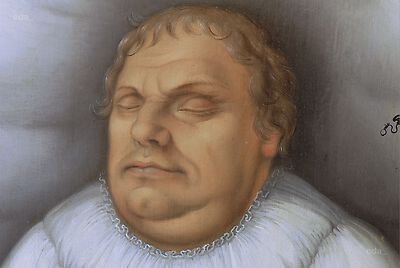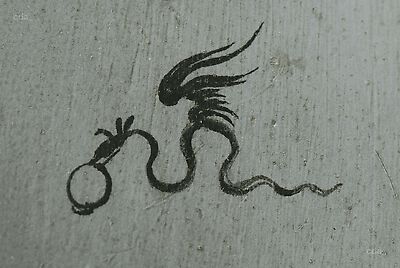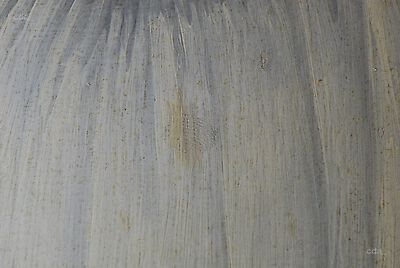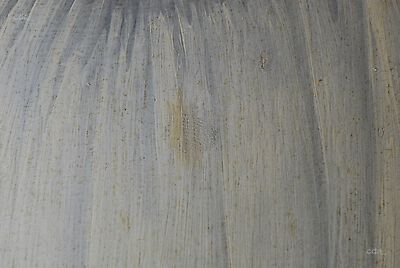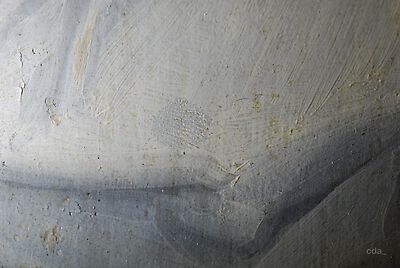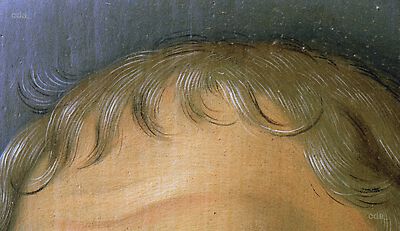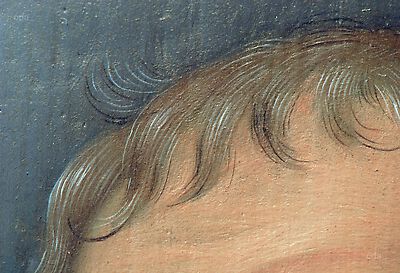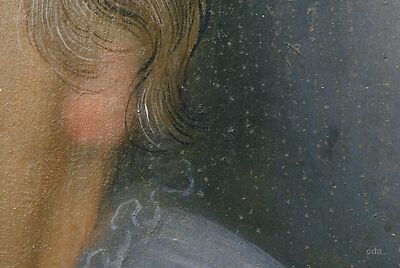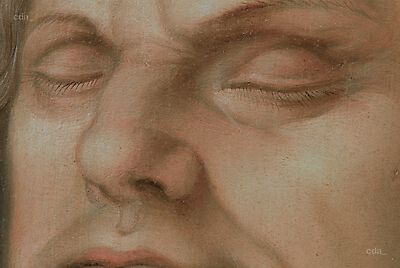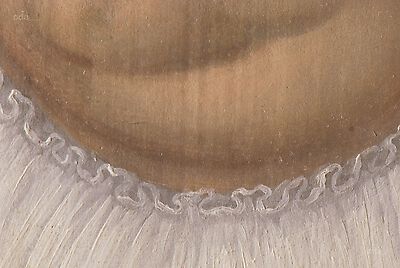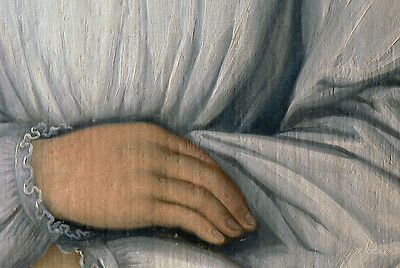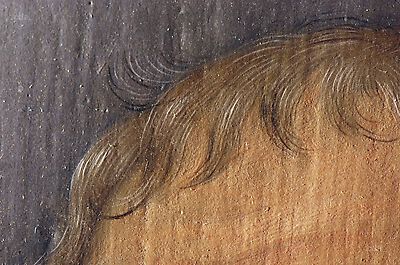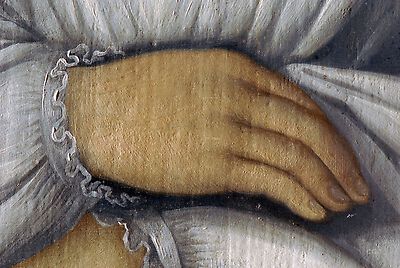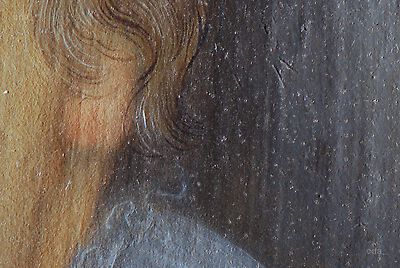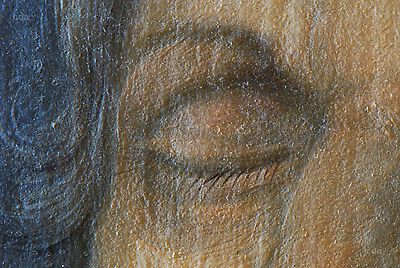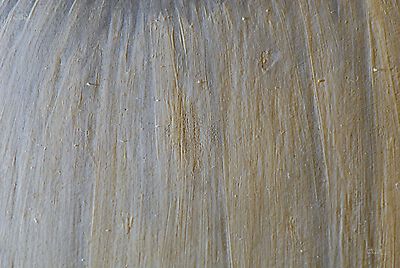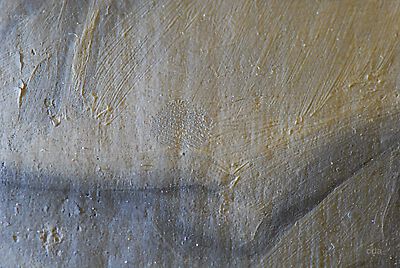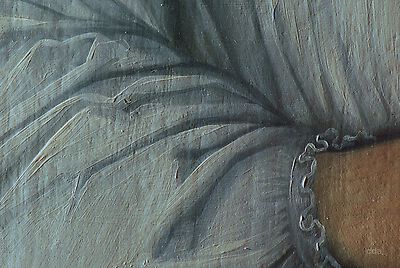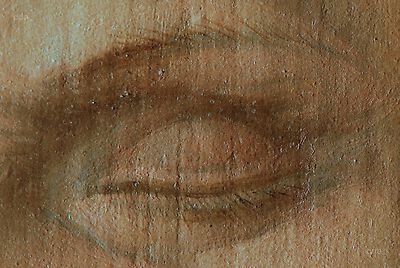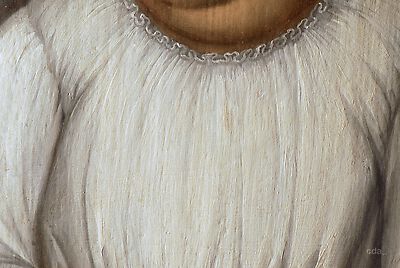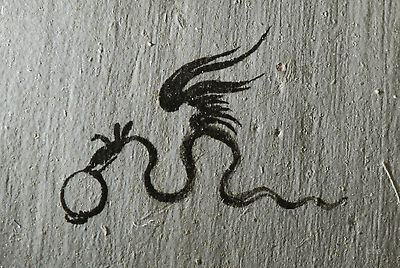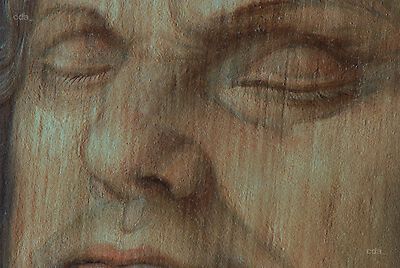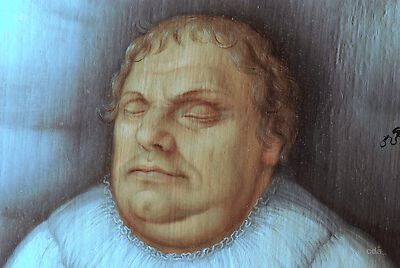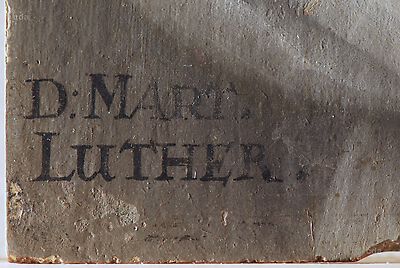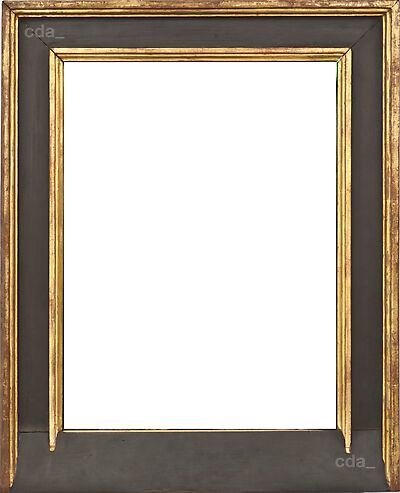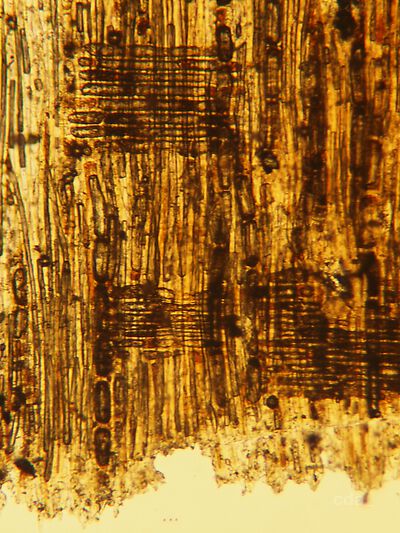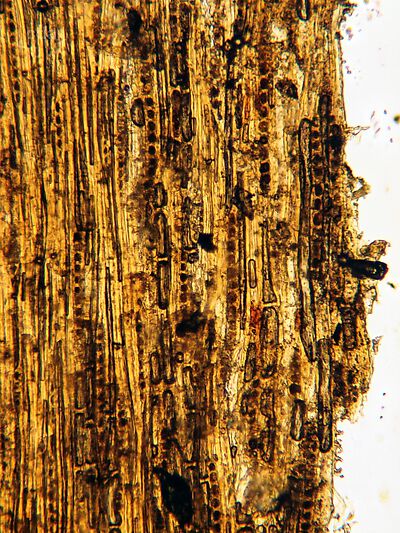Support
Oak
The panel consists of a single plank, which at the edges is c. 0.7 cm thick. At the centre of the painting the panel is about 0.9 cm thick. The grain is in a vertical direction and the plank exhibits a radial cut. There is a rebate on three sides of the panel (as seen from the reverse the top, right and bottom edges). This suggests the reuse of a larger panel and that the left edge was cropped to a greater extent before the painting process began. Moreover in raking light an unusual surface structure is visible in the region the pillow, that appear to be the result of sinking ground and paint layers. this may have occurred if the panel already exibitied woodworm damage and was thinned on the front before use. However the x-radiograph does not show any ground in the channels, therefore it must be asumed that a fill material was employed before the ground and imprimatura were applied. Plane marks are visible on the reverse.
Ground and Imprimatura
The panel exhibits a white ground of an average thickness consisting of a chalk-glue mix, probably with the addition of lead white and applied in a number of layers. Through the paint layers numerous, very fine pin holes are visible in the ground - a phenomenon that frequently occurs during the drying process of a chalk ground that has become too hot during preparation creating bubbles. A barbe is not evident. The ground and paint layers extend to the edge of the panel. Furthermore ground and paint is also present on the cut edges of the panel.
There is an opaque imprimatura layer above the ground layer containing black and white pigments. It is relatively dark grey in tone and contains in addition to a small quantity of chalk (impurities) lead white and carbon black. In the lower half of the painting at the left and in the centre the x-radiograph reveals horizontal and occasionally diagonal (from the top right to the bottom left) streaky brushstrokes. These are also visible in raking light and do not correspond with the painted image. They may result from the ground (lead white?) application or the greyish imprimatura.
Underdrawing
Isolated black drawn lines are visible through the paint layers in areas of the mouth with the naked eye and under the stereomicroscope and were probably executed with a stylus. No further lines were discovered employing infrared reflectography.
Paint Layers and Gilding
PIGMENTS: ( X-ray fluorescence analysis (XFA) and optical spectroscopy)
Red: 5, 6 (flesh paint: cheeks, lips): probably ochre, some vermilion, lead white
Dark grey: 1, 3 (background): lead white, some calcium present (possibly small addition of chalk?), probably carbon black
White: 2 (background): lead white, some calcium present (possibly small addition of chalk?)
Black: 4 (signature): probably carbon black, some copper based pigment or impurities
The ground and paint layers cover the entire panel and in some areas extend beyond the edge. There is an opaque grey imprimatura over the ground. The painting appears to have been executed in oil, whereby opaque discrete layers were applied. there are relatively smooth areas as well as impasto highlights . The contours of the sitter are on top of the background with the exception of the cheeks where the grey of the background is present in the areas of shadow over the flesh paint. It would appear that the artist began with the background and then painted the figure. Within the figure he painted the flesh paint first and then the dress.
In general it was observed that on this painting the paint layers follow a sequence whereby lighter areas were applied over dark grey and brownish grey areas. On the pillow this is the case for the transition from the figure to the background (the lighter coloured paint of the shroud was painted on top of the pillow) , but also within the white shroud and the flesh paint. The contours of the hair were applied last over the flesh paint and the background. There are two fingerprints in the paint one below the chin of the sitter and one on his left sleeve. Contrary to the inscription in black at the bottom left the serpent insignia was probably added later as it stands out against the bluish green fluoresce of the background. The painting is not varnished and exhibits a relatively matt surface. It would seem that the artist planned each individual stage of the painting process in advance. Therefore the painting appears stiff, rather than free and spontaneous. For example the strands of hair were frequently executed as precise parallel lines. Also more formulaic in execution is the area where the material is gathered around the collar and the sleeves that precludes a natural representation of volume. Unlike the usual practice at Cranach’s time here an application of layers cannot be discerned. This interplay of opaque paint layers and glazes creates more depth and saturation. The dull surface appearance is emphasized by the lack of a varnish. In addition the matt, slightly coarse appearance of the surface is also emphasized by the fact that the painting is not varnished.
Framing
not the original frame
Profiled battens, water gilding, dark finish
52.5 cm x 42 cm x 6 cm (glazed)
- examined by Ulrike Hügle
- examined by Mathias Lang
